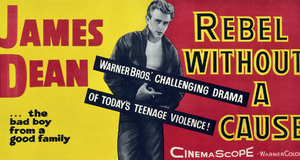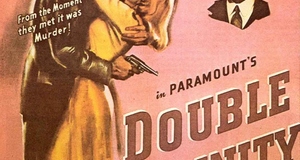High Fidelity: Comparing Novel and Film
By
2010, Vol. 2 No. 04 | pg. 1/1
KEYWORDS:
Since soon after the invention of sound films, directors have been turning popular—and sometimes not so popular—books into motion pictures. Many a critique, either positive or negative, has been written about the editorializing done and the amount of creative license taken during the transition of these stories from print to the big-screen. Certainly audience members will argue as to the quality of one of these forms versus the other, or whether there might be a better actor for some role than the particular one chosen by the Hollywood powers that be, or if the soundtrack either enhanced or detracted from the effect, or even if the plot was completely ruined and the movie was declared a colossal failure. However, when turning any piece of literature into a film, there are a number of distinct and unavoidable differences, no matter how the contributors may struggle to make the two forms as similar as possible. High Fidelity is one such novel that has been turned into a movie. It was written in 1995 by British novelist and journalist Nick Hornby. It is a national bestseller and a New York Times Notable Book, and has received worldwide praise. In 2000, Stephen Frears directed the film version starring John Cusack, which has grossed almost 50 million in its lifetime. There are several key differences between the novel and the film, particularly notable in the scene where the narrator (Rob Fleming in the novel; Rob Gordon in the film) discusses his “desert-island, all-time, top five most memorable split-ups, in chronological order” (Hornby 3). One of the most glaring differences, textually, between the novel and the film is the audience’s relationship with the narrator. The scene begins (at the very beginning for the novel, after a bit of introduction for the film) with the narrator listing these break-ups and asking his most recent break-up, Laura, whether or not she can see her name on that list. Obviously, this is a rhetorical question, because her name is not there. In the very beginning of this scene, both the novel and film find the narrator addressing Laura as if she were actually reading or listening to him; however, the reader gets the impression that the narrator does not actually expect her ever to do either. She is not present to listen, and she will not read what he has written, so the actual readers are left in a kind of limbo between the two components of this pair. Instead, in the movie, the narrator is initially looking directly at the camera as if he is actually addressing the audience; however, throughout his tirade, he glances away from the camera, presumably in the direction of Laura’s retreating figure, and at one point even opens the window and yells the last bit of his monologue at her. Laura’s lack of response leaves viewers wondering if she heard this, or if it was merely symbolic.Afterward, in the film, the narrator resumes addressing the camera, and thereby the audience, to which he remains constant for the rest of the scene. In the book, contrastingly, he addresses Laura by name every so often, again as if she were actually taking in the information he is divulging. The nature of the writing/monologue feels similar to a confession—the narrator includes intimate details of his past in a way that suggests they are actually being received by some kind of confidante, i.e. the reader/audience, instead of an ex-girlfriend. These seemingly confidential details make the audience of the film feel as if the narrator is a close friend to whom they are lending an ear to listen and shoulder to cry on, whereas the repeated mention of Laura’s name in the novel leave the reader still unsure as to who the narrator is actually addressing, if anyone. Despite this apparent ambiguity in direction, the novel of course includes more detail—both in quantity and in variety. This serves to make the readers feel closer to the narrator because they are in possession of so much deeper knowledge. Here the novel and the film, despite deviating between the object(s) towards which the narrator’s words are directed, each manage to pull the audience into the story by way of an unspecified familiarity. A second, crucial difference between a novel and a film is the possibility and addition of an actual soundtrack. Being that High Fidelity itself, in novel form, is heavily laden with musical references, trivia, and criticism, the soundtrack to the film version is of particular importance. Rob turns on “You’re Gonna Miss Me” by the 13th Floor Elevators right before he yells out the window at Laura, which helps to accentuate the defiance he is displaying while he states that their break-up did not hurt him as bad as others. Playing “I Want Candy” by Bow Wow Wow while Rob is kissing Alison Ashworth on the playground echoes the childish and evanescent nature of their “relationship”. The inclusion of Joan Jett and the Blackhearts‘ “Crimson and Clover” while Rob and Penny Hardwick are at a party immediately ties the scene to the 80’s and gives the audience a better sense of the time in which the events the narrator is relating were taking place. The music playing during the entire part with Charlie Nicholson is edgy, rebellious-sounding, and vaguely erotic, all of which fit Rob’s description of her. In addition, the lack of soundtrack during the narrator’s monologues helps to separate them from the clips of back-story. The novel, despite providing much deeper insight into the narrator’s thoughts and feelings, does not provide quite the same historical or contextual backdrop in terms of music. As is the case with all books-turned-movies, there is the issue of a reader’s personal visual interpretation of a character as it compares (or not) to the actor playing him or her. Hornby provides a measure of general description for each of his characters in the novel, but leaves off enough for the reader to create their own mental images. In the film version, obviously, the audience is seeing the producers’ choice of actor or actress for each given role—which may or may not have anything at all to do with the description Hornby gives in the novel. This may result in the audience finding the characters on film to seem more or less real, or more or less relatable than those in print. It may also change the level of each character’s appeal to the audience if a character in the novel is portrayed very differently in the film. Tied to this difference are the phrasing and expressions of each actor or actress. For example, in the film, while the narrator is first listing his top five break-ups, he furrows his brow and wrinkles his nose a bit when he says, “Those were the ones that really hurt (High Fidelity).” This adds a kind of emphasis to the words that is not present in the novel; the narrator’s tone in the book is sarcastic and somewhat resigned—almost careless, though he is obviously concerned with that about which he is writing. Afterward, he fairly spits, “Can you see your name on that list, Laura? Maybe you’d sneak into the top ten! But there’s no room for you in the top five, sorry! Those places are reserved for the kind of humiliation and heartbreak you’re just not capable of delivering (High Fidelity).” Cusack’s raised voice, and the stress he places on words like “sneak” and “capable” render the audience’s overall impression as entirely different from that of the novel, in which the narrator speaks calmly, without any particular emphasis or exclamation points. Following this, in the movie, the narrator slumps dejectedly into a chair, his face drooping, before perking up ever so slightly enough to add a dramatic flair as he starts talking about Alison Ashworth. In another instance, the narrator is speaking about Charlie, saying, “She liked me. She liked me. She liked me. At least, I think she did (High Fidelity).” Immediately after this, the narrator clears his throat, shrugs a little, and makes a wistful sort of expression before continuing his monologue. These sort of facial expressions, which serve as clues to the characters’ feelings about things even beyond the words that are being spoken, are impossible to convey with a first person narrator. Rob cannot say about himself that he made a face while telling Laura she was incapable of hurting him, or that he cleared his throat and shrugged after speaking about Charlie. While immersed in the novel, a reader may imagine a character making one kind of expression or another to accompany any given speech or event. In a film, though, the interpretation of how the character might make use of facial expressions is left entirely to the actor and director, whose impressions on this may further contrast with that of the reader. Another inevitable difference in the experience of reading a book as opposed to watching a movie is that reading takes longer. No matter how quick a person can speed through a novel the size of High Fidelity, it will still take them longer to do that than to watch the movie. Thus, reading a book is a bigger commitment; it will take more of one’s time and require more of one’s thought, and so one will develop a different kind of connection with the book than with the movie. The effort involved in reading a book also provides a level (whether it be substantial or lacking) of satisfaction upon the completion of the task. Watching a movie requires significantly less effort on the part of the audience, and thus the final effect is different. This may differ according to each reader or audience member. The length of time it takes someone to read a book may reflect simply on their reading ability, or it may suggest that they are not terribly interested in the book, or it could suggest that they are perhaps trying to savor their experience with the book. The length of time it takes someone to watch a movie will always be the same as the length of time it takes someone else (excluding, of course, pauses for popcorn or doorbells or bathroom breaks), so the overall experience of the movie-watchers is relatively the same. Another factor is that more than one person can watch a movie at the same time; it is an activity that can be (and frequently is) easily shared. People can watch a movie together, be shown the exact same thing (although different viewers may notice different things, the physical evidence of something on screen is still there), and engage in a discussion about it afterward. A book, on the other hand, can really only be read by one person at a time; thus, the reader’s experience is more solitary and independent—the journey, so to speak, is more personal. Even between two people who have read the same book at the same time, each person takes away something considerably different than does the other. In addition, some people are more affected by books than by movies, while other people are more affected by movies than by books.
To conclude, there will always be disparity in terms of events and characters between a novel and its corresponding film. The textual differences between the two forms run deeper, and, especially in the case of High Fidelity, result in a distinctively altered experience for the consumer of each artifact, regardless of the text itself. Appendix YouTube—Cusack's top 5 all time break-up list: Pt. 1 Works Cited High Fidelity. Dir. Stephen Frears. Perf. John Cusack. Buena Vista Pictures, 2000. DVD. "High Fidelity (2000) - Soundtracks.” The Internet Movie Database (IMDb). Web. 06 Dec. 2009. Hornby, Nick. High Fidelity. New York: Riverhead Books, 1995. Print. Suggested Reading from Inquiries Journal
Inquiries Journal provides undergraduate and graduate students around the world a platform for the wide dissemination of academic work over a range of core disciplines. Representing the work of students from hundreds of institutions around the globe, Inquiries Journal's large database of academic articles is completely free. Learn more | Blog | Submit Latest in Film & Media |
















